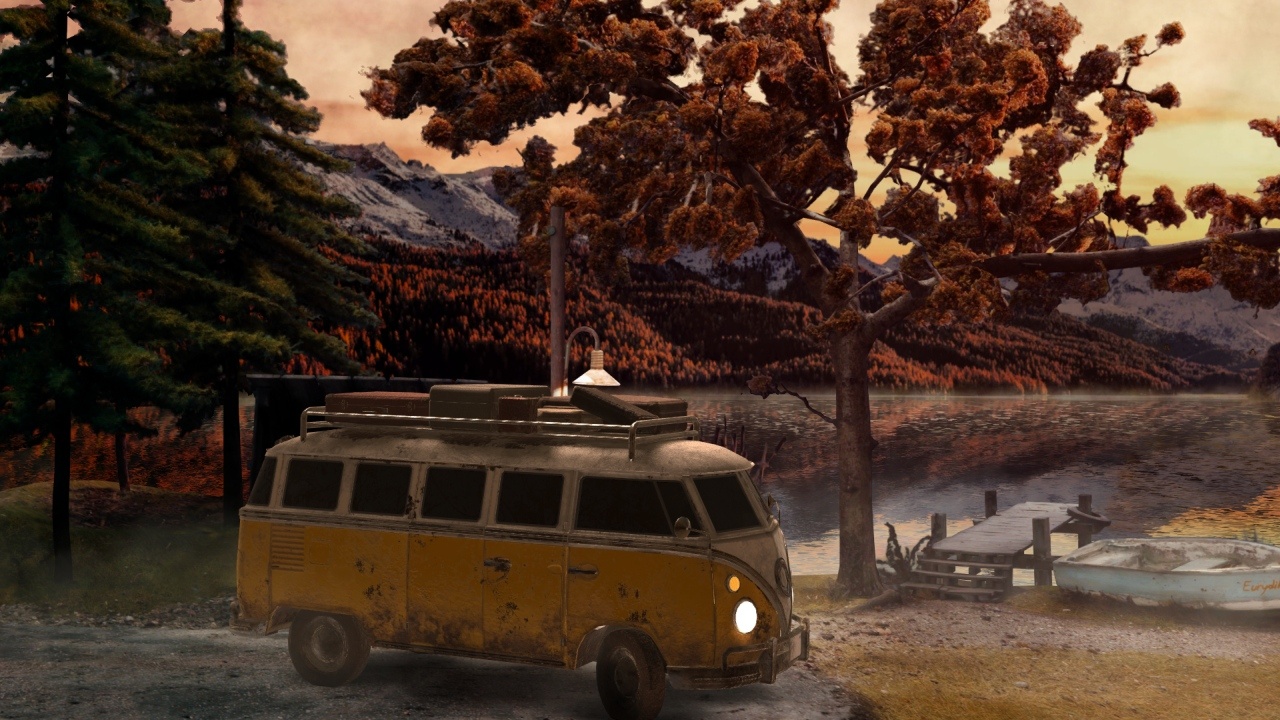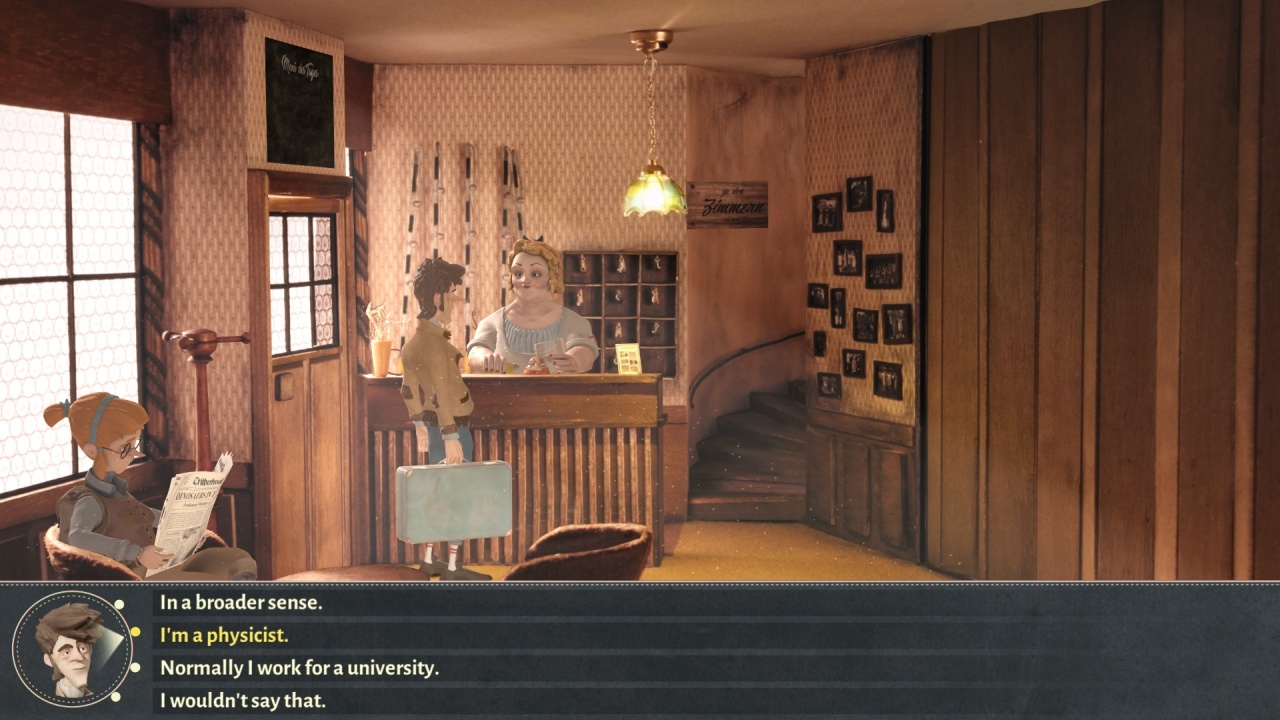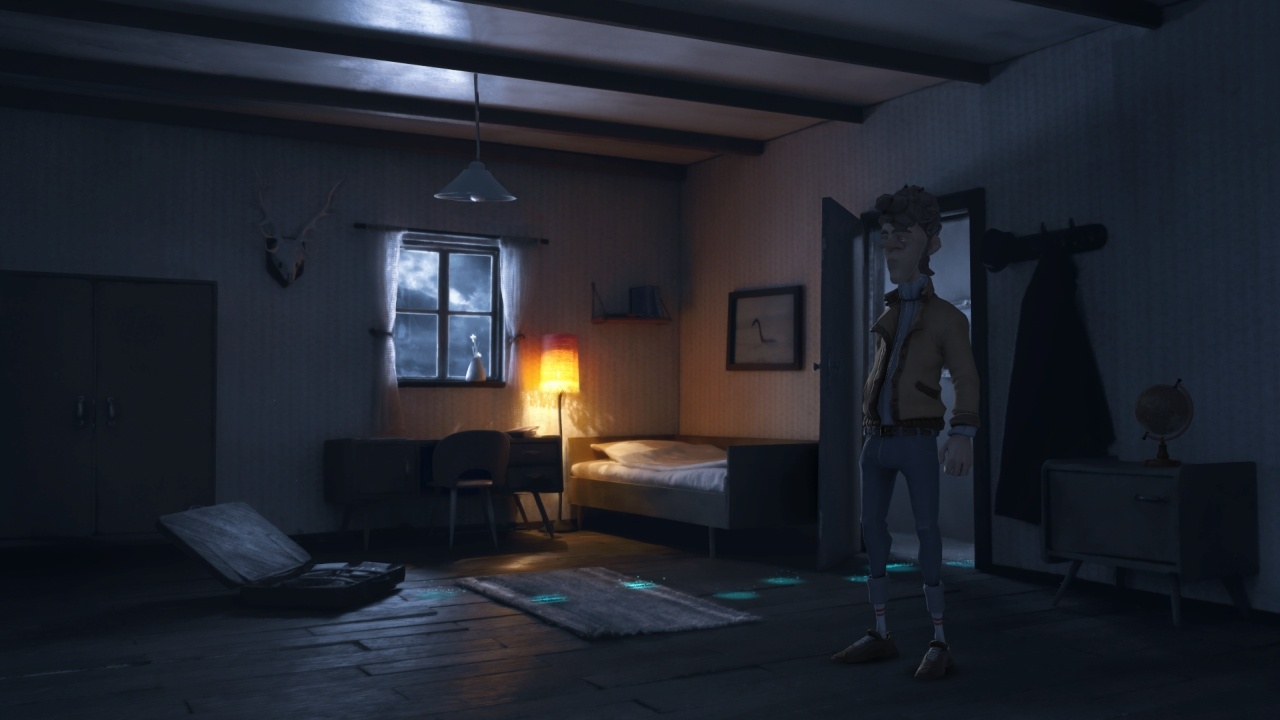
There’s nothing quite like a good, atmospheric story. When you think about some of the grand tv tales of yesteryear – Dallas, Man From U.N.C.L.E., The Prisoner – these were episodic tales that still formed a massive tapestry that doesn’t get nearly enough attention or credit in today’s media. Sure, production values and overall budgets for tv series have gotten better, and everyone can’t wait to see what happens in Game of Thrones’ final season, but there were shows pulling these levels of attention and appeal long before any of us were born. One of those shows was a fantastic exploration of weirdness and psychological creepiness called Twin Peaks, and it’s hard not to see the impact it’s had on culture and society since then. A simple murder mystery that spiraled wildly out of control thanks to the environment and cast of characters, the death of Laura Palmer remains as culturally relevant today in media as any. I bring this up because the point and click adventure game, Trüberbrook, uses it as a solid influence for their own story to tell, and it’s easy to see the influence and homage. Yet, at the same time, holding oneself to such a high standard in comparison can make for a long fall, and there is a bit of a letdown when looking at this game through the David Lynch lens.
I won’t spoil the story, as it’s something the developers specifically asked not to do, but I’ll frame things as best I can. After a bit of an apropos opening, you find yourself in the role of Hans Tannhauser, who is American but has such a German name it’s not a big surprise to find out he has German blood. Mr. Tannhauser is a quantum physicist, who has inexplicably won a raffle to the sleepy town of Trüberbrook in a contest he doesn’t really remember entering. Approximately six seconds after checking in (well, he’s asleep, but in-game time), Hans awakens to find some kind of weird apparition stealing his quantum physics paper, and he’s quite miffed about that. Hans then sets out to find out exactly what is going on in this town, and befriends several people along the way. Gretchen, the woman who rolled into town quite mysteriously. Lazarus, a fellow scientist/traveler with a bit of a predicament. And a whole motley crew of unusual and offbeat folk who make up Trüberbrook and the surrounding area. As you may guess, there’s something afoot with quantum physics and paranormal as a whole, and poor Hans is right in the thick of it, as, surprise, turns out you don’t “win” a free stay in a remote German town for nothing. While I certainly won’t be spoiling things moving forward, there will be some isolated incidents that need to be referenced because, hey, it’s a P&C adventure, the story is somewhat important to the overall grade.

First, let’s touch upon the good points. Trüberbrook is done up in a beautiful stop motion style that really conveys a lot about the artistic direction and ideals of the game. From starting at an abandoned gas station in the middle of nowhere to ending up in some very exotic and peculiar locales, the creation and loving craftsmanship of the world is evident in many details. I especially loved the way that atmosphere itself was created, as we see elements of weather, time and season crop up in various parts of the storyline. My personal favorite was a trip to an asylum, as the design of the halls, rooms and some of the more curious corners were pretty exquisite. The only downside to the way the game was animated and created is that there was definitely a jerky condition with moving around, and there was occasional lag when it came to Hans needing to walk anywhere or do anything. It wasn’t constant, but it did happen more often than you’d expect, though I’ve been assured there’s a day one patch coming for the game. That’s the weirdest goddamn thing to talk about a day one patch and not specify what it’ll improve. I think that’s because “day one patch” is a nice catch all to help developers cover their bases for reviewers who are printing before the game itself is released. Whatever, hopefully the patch does smooth things out.
As for gameplay itself, Trüberbrook handles a lot of the classic interactions of the game genre while adding some important, if somewhat redundant, aspects. You get a chance to interact with most people, things and animals within the game in the standard way: talking, looking, touching, and using items. One extra feature that comes under the “items” subcategory is having Hans bust out his pocket recorder and make notes about what he sees or comes across, which keeps you in the analytical and investigative mindset the game is going for. Plus, the developers have wisely hidden certain interactions with items and people behind multiple attempts to get to where you want to go. Early on, obtaining a certain disc item requires you to speak to the hotel owner/bartender a couple of times before getting what you want, so that there isn’t just a manner of “force your way through based on item memory.” Even if it’s your ninth playthrough, you still need to slow down and do things at Trüberbrook’s pace. The game is full of moments like this, and they range from logical and satisfying (examining a pile before plunging your hand in and getting a helmet) to somewhat exhausting and annoying (talking to the same woman like five times with NOTHING before you finally get to ask about something in particular).
While talking, looking and manhandling things work as well as they ever did (complete with certain quips from Hans when you should keep your hands to yourself), the use item function on the wheel sort of removes a bit of the struggle that older point and click adventures offered. For example, you aren’t just given free range of your inventory when the game has an objective in mind, but, instead, are shown the one or maybe two items that’ll benefit you best. While it’s not a complete cakewalk (Hans will flat out tell you when you’ve only got three of the four items that you need), you no longer have to do the old “try everything and see what finally sticks” approach, which…I suppose is a good thing. I don’t know, while it makes sure you aren’t wasting your time with ridiculous combinations, it also just makes everything feel apparent and direct, like “oh, I guess I’m using these coat hangers. Okay,” instead of gradually figuring out what’s a good replacement for the missing lift chairs. Any long time point and click adventurer will notice that items you can pick up make themselves known immediately, and this isn’t a game of red herrings in terms of items, so, once you grab something, it’s only a matter of time before you can use it. And the game even purposely empties your inventory at certain moments so you can’t use game logic to try and solve a problem: you just gotta make the best out of what’s around.

Puzzles range from apparent and clear to confusing and obtuse. Most of the time, the puzzles that you need to solve are figured out by either looking and audibly saying “that, let’s do that,” or at least talking to someone and they’ll tell you what to do. Working with Lazarus to build a machine for him takes a couple of moments of reasoning, but he helps you out and gives you everything that you could want in terms of information, and the game opens itself up in the process. Sending a telegram, a much later “puzzle,” means having a notebook handy and jotting down notes, which, honestly, you should have a notebook when it comes to these types of games. But there’s a particular puzzle that’s only about a fourth into the game that frustrated me to no end, where you had to pick the right answers for a series of ink blots to say what you thought you saw. Obviously, the doctor had a set answer that he wanted you to say, but there’s no indication as to whether they’re correct or not, and you keep getting sent back to your room until you get those three right. It’s straight up trial and error based on his responses to see if he wants interesting or not interesting from a patient, and, once you get that done, you’re then subjected to like twelve more questions that seemed to be okay with any answer: I refuse to believe, after ten attempts on the first three, that I just got the last dozen right with no problems. AND THEN WE NEVER HEAR FROM THAT DOCTOR AND WHAT HAPPENED IN THAT PLACE AGAIN, WHAT THE HELL.
This is where we sort of take a turn in the review: the story. Trüberbrook wants very much to have a surreal, creepy but fun element to what’s happening within, and it succeeds…somewhat. The doctor and his establishment that we just talked about are a big part of the story because you can’t progress without settling with them, but then you never have to think about it ever again afterwards. Several characters that we talk to and meet seem like they might have a greater role of importance towards the end of the game (especially since they appear in certain dream like states), but they never do much more than be foils for puzzles and item collection. Things are certainly funny and strange at several moments, including the fate of Trude’s brother, the disappearance of the meteorologist, collecting the Baron’s cat and the general reaction to you clearly being poisoned by a meteor. But then there are moments that just feel odd but without any sort of charm to back them up. Gretchen is an unlikeable person from the moment that I met her, and she continues in that vein to the very end with very little redemption. Hans fluctuates wildly between being a goofy, slightly aloof scientist who’s blind to everything around him and attempting to be a real hero with varying results. Then there’s the matter of the musical number that you simply have to sit and listen to for several real minutes, which I was not happy with. The music was cool, but I couldn’t move anywhere, do anything, or skip ahead, and it was forced in a way that I didn’t enjoy.
By the end of it all, I was a little surprised about how abrupt everything felt in conclusion, and the ending wasn’t necessarily satisfying, though it did open up possibilities for sequels. Trüberbrook could easily have a second chapter added on, but I think there needs to be vast improvements moving forward. Targeting with the right cursor while walking with the left means there needs to be a better balance in the density of targets on the screen: far too often I had to keep flicking before I could align on what I needed to interact with. The difference in walking and running speed could be shifting so that the running actually propelled me at a decent pace. Touchscreen incorporation with buttons would give players the best of both worlds when playing in handheld, and having motion controls would allow for better functionality in docked mode. I wouldn’t mind seeing a next set of adventures in the Trüberbrook universe, though I sincerely hope that we find out more about the massage rod and what became of it. With plenty of good referential humor, original dry wit and some truly strange storytelling, Trüberbrook can be quite charming, but let’s make sure to leave the key with the front desk when we leave.
REVIEW CODE: A complimentary Nintendo Switch code was provided to Bonus Stage for this review. Please send all review code enquiries to press@4gn.co.uk.
Subscribe to our mailing list
Get the latest game reviews, news, features, and more straight to your inbox
Thank you for subscribing to Bonus Stage.
Something went wrong.
Trüberbrook Review
-
Gameplay - 7/10
7/10
-
Graphics - 7/10
7/10
-
Sound - 7/10
7/10
-
Replay Value - 7/10
7/10
User Review
( votes)Overall
Summary
Truberbrook has style, class and charm, and does a solid job of storytelling: however, some technical issues, combined with red herrings, may put players off.





